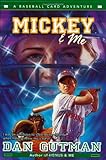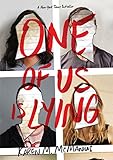Celebrating Hanukkah, The Jewish Festival Of Lights
Language
Reading Level
Listen to Article

At sundown on December 2, 2018 Jewish families worldwide will mark the first day of Hanukkah by lighting a candle on a special menorah. The eight-day celebration, which will end on December 10, is observed annually on the 25th day of Kislev, the ninth month of the Hebrew calendar, which falls anywhere from late November to late December in the Gregorian calendar.
The festival’s origin dates back more than 2,000 years, when Antiochus IV Epiphanes ruled Judea, or the Land of Israel. The Greek king, who reigned from 175 to 164 BC, outlawed the Jewish religion, ordering Jews to worship Greek gods instead. To make matters worse, in 168 BC, his soldiers massacred thousands of people in Jerusalem and violated the city’s holy Second Temple by installing an altar to Zeus and sacrificing pigs (considered non-kosher by Jews) inside the structure’s sacred walls.

In 165 BC, after three years of fighting their Greek oppressors, the citizens managed to reclaim the holy site. When Jewish worshippers first stepped inside the Temple after their victory, they found a small quantity of olive oil, just enough to light the menorah for a single day. However, to their astonishment, the candles burned for a full eight days, giving the residents enough time to prepare a fresh batch of kosher oil. Soon after, an eight-day festival was declared to commemorate the religious freedom, and the great oil miracle and Hanukkah, or Chanukah as it is also called, was born.
Though many fun traditions have been added since the inaugural celebration, lighting a sacred candelabrum that can hold nine candles remains the most important ritual. Eight candles are lit, one at a time, to mark each day of the Hanukkah miracle. A special ninth candle, known as Shamash (attendant), is used to kindle the others.

Following the candle lighting and prayers, families sit down for a delicious feast. To commemorate the miracle olive oil that led to the start of the holiday, many traditional Hanukkah delicacies are deep fried. Among the favorites are potato pancakes called latkes and jelly-filled donuts known as sufganiyot.
Once the dinner table is cleared, it’s time for fun games, the most popular of which involves a four-sided spinning top called a dreidel. Participants begin with an equal number of game pieces – which range from candy to nuts to chocolate coins. After donating a game piece to a mutual pot, the players take turns spinning the dreidel. Each side features a different letter, which together form the acronym for “Nes Gadol Hayah Sham,” which means “a great miracle happened there,” referring to the miracle of the oil lasting eight days in ancient Israel. Depending on the side the dreidel lands on, participants can lose a game piece to the mutual bowl or hit the jackpot and win the entire loot.

Given the holiday’s proximity to Christmas, it is not surprising that exchanging presents has become a big part of the celebration. Jewish kids are especially fond of the ritual given that they receive a gift, or two, for eight consecutive days!
Happy Hanukkah!
Resources: History.com, Wikipedia.org

Get the Workbook for this article!
Workbook contains: Article, Reading Comprehension, Critical Thinking Questions, Vocabulary in Context (+ answers), Multiple Choice Quiz (+ answers), Parts of Speech Quiz (+ answers), Vocabulary Game (+ answers)Cite Article
Learn Keywords in this Article
277 Comments
- Ice girlover 5 yearsI do it every year what's Christmas like?
- hiloover 5 yearsi want to do it
- hi fiveover 5 yearscool
- hiloover 5 yearscool
- lolaover 5 yearslove and yum!!!!!
- akhalidalmost 6 yearscool
- Beccaalmost 6 yearsI love celebrating Hanukkah!
- benalmost 6 yearscool
- party PANDAalmost 6 yearsI wish I could celebrate it
- Party PANDAalmost 6 yearsI wish I could celebrate it




